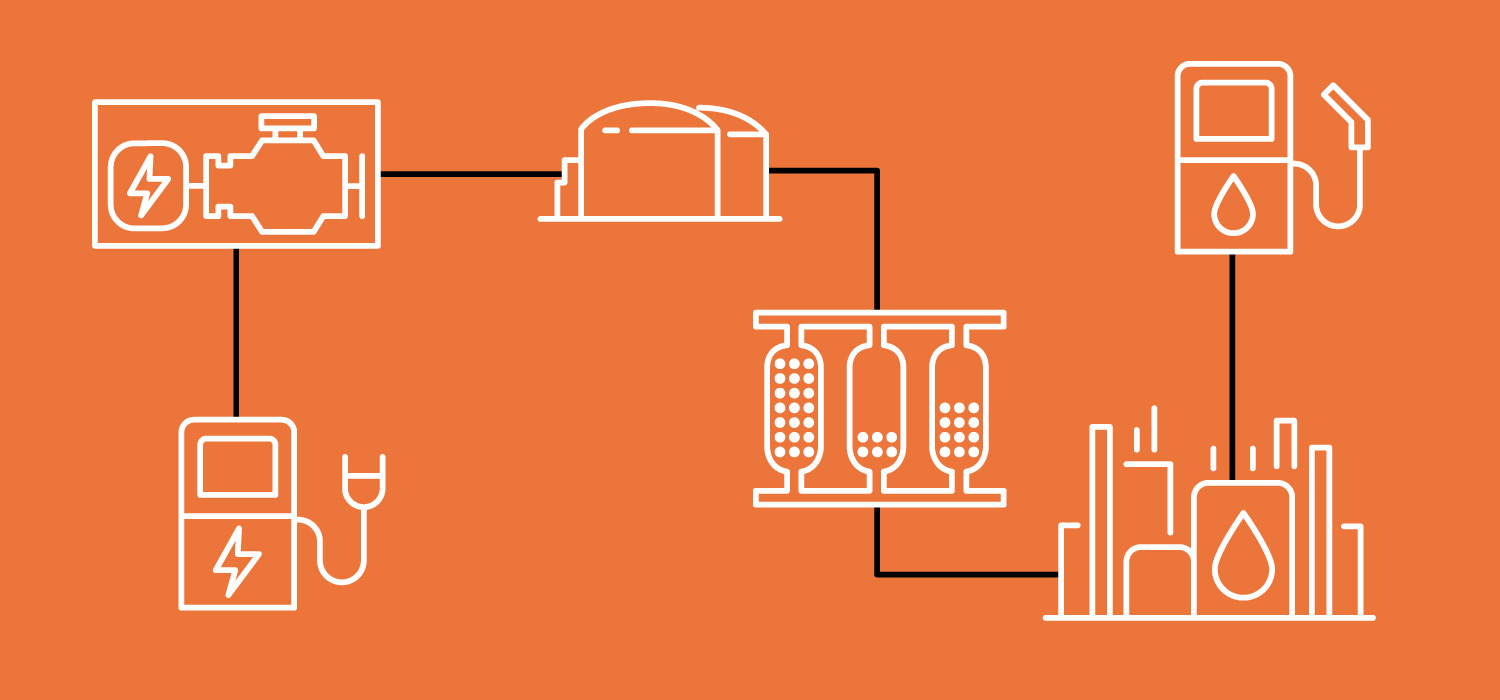
Green fuel: energy transition in the fuel sector
It is a global task to reduce our CO2 footprint in the mobility sector. Many “green” fuel alternatives require the development of their own infrastructure. With biomethane, the energy transition can be implemented faster, more economically and more meaningfully.
Biomethane is compatible and interchangeable with natural gas. This is why the existing natural gas infrastructure can be used without the need for special technological adjustments. Biomethane can be fed into the natural gas grid in any quantities, stored and made available as required in the form of CNG (compressed natural gas). By feeding it into the natural gas grid, biomethane can also be compressed and liquefied in large quantities – with the corresponding economies of scale. In areas away from the grid, biomethane can also be compressed and liquefied directly at the biogas plant or a bundle of biogas plants.
Biomethane can also be liquefied as bio LNG (liquefied natural gas). In this form – unlike other “green fuels” – it can also be used for heavy goods transport or shipping traffic. In agricultural logistics, bio CNG and LNG can also replace diesel as a fuel.
In combination with CHPs for power generation, a biogas plant can therefore potentially replace any current energy sources, regardless of the vehicle technology, whether electric or combustion engine.
